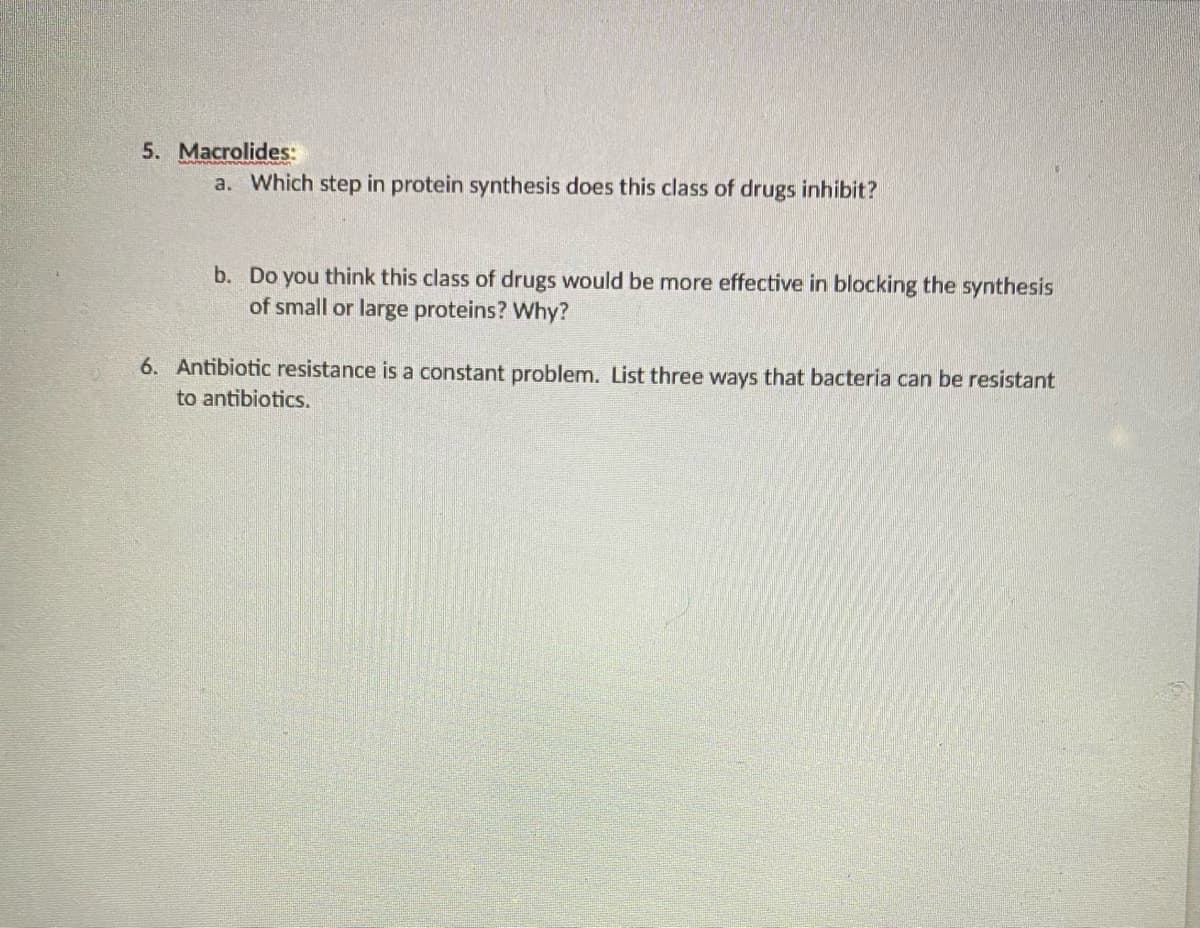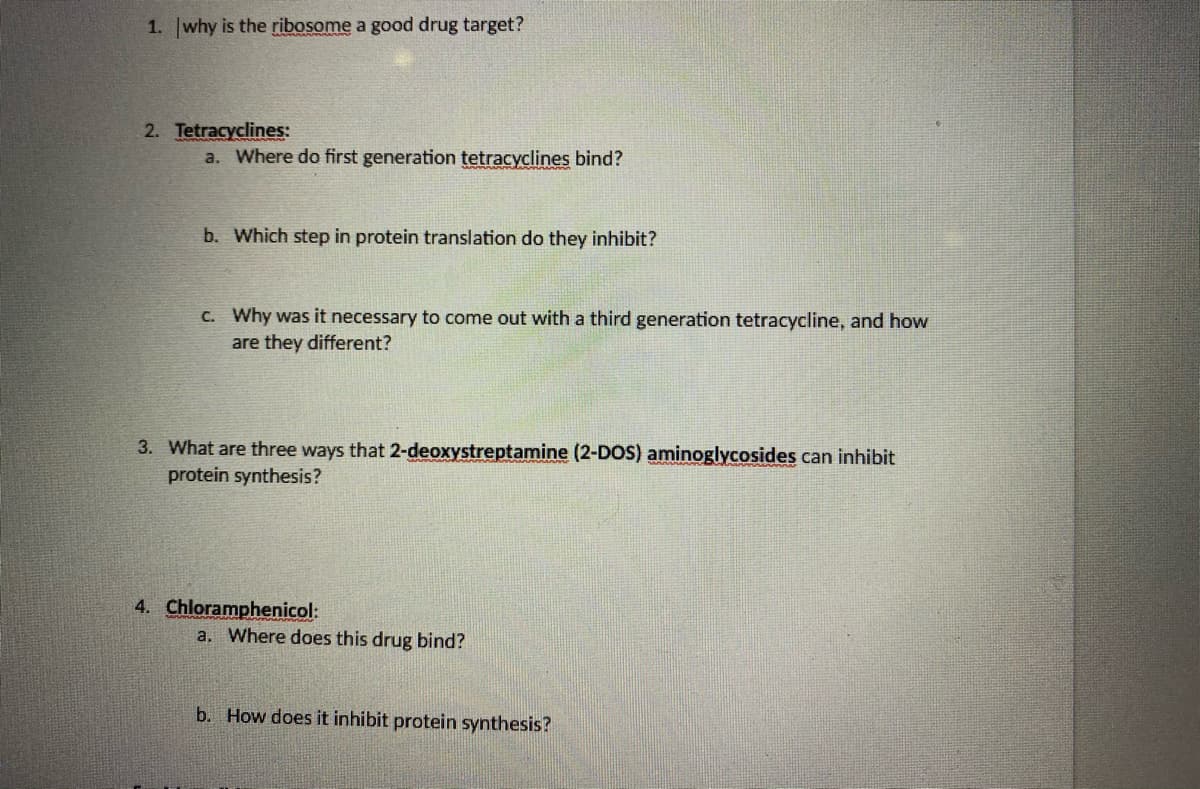1. why is the ribosome a good drug target? 2. Tetracyclines: a. Where do first generation tetracyclines bind? b. Which step in protein translation do they inhibit? C. Why was it necessary to come out with a third generation tetracycline, and how are they different?
1. why is the ribosome a good drug target? 2. Tetracyclines: a. Where do first generation tetracyclines bind? b. Which step in protein translation do they inhibit? C. Why was it necessary to come out with a third generation tetracycline, and how are they different?
Biology 2e
2nd Edition
ISBN:9781947172517
Author:Matthew Douglas, Jung Choi, Mary Ann Clark
Publisher:Matthew Douglas, Jung Choi, Mary Ann Clark
Chapter15: Genes And Proteins
Section: Chapter Questions
Problem 3VCQ: Figure 15.16 Many antibiotics inhibit bacterial protein synthesis. For example, tetracycline blocks...
Related questions
Question

Transcribed Image Text:5. Macrolides:
a. Which step in protein synthesis does this class of drugs inhibit?
b. Do you think this class of drugs would be more effective in blocking the synthesis
of small or large proteins? Why?
6. Antibiotic resistance is a constant problem. List three ways that bacteria can be resistant
to antibiotics.

Transcribed Image Text:1. why is the ribosome a good drug target?
2. Tetracyclines:
a. Where do first generation tetracyclines bind?
b. Which step in protein translation do they inhibit?
C. Why was it necessary to come out with a third generation tetracycline, and how
are they different?
3. What are three ways that 2-deoxystreptamine (2-DOS) aminoglycosides can inhibit
protein synthesis?
4. Chloramphenicol:
a. Where does this drug bind?
b. How does it inhibit protein synthesis?
Expert Solution
This question has been solved!
Explore an expertly crafted, step-by-step solution for a thorough understanding of key concepts.
Step by step
Solved in 2 steps

Knowledge Booster
Learn more about
Need a deep-dive on the concept behind this application? Look no further. Learn more about this topic, biology and related others by exploring similar questions and additional content below.Recommended textbooks for you

Biology 2e
Biology
ISBN:
9781947172517
Author:
Matthew Douglas, Jung Choi, Mary Ann Clark
Publisher:
OpenStax

Biochemistry
Biochemistry
ISBN:
9781305577206
Author:
Reginald H. Garrett, Charles M. Grisham
Publisher:
Cengage Learning

Biology: The Dynamic Science (MindTap Course List)
Biology
ISBN:
9781305389892
Author:
Peter J. Russell, Paul E. Hertz, Beverly McMillan
Publisher:
Cengage Learning

Biology 2e
Biology
ISBN:
9781947172517
Author:
Matthew Douglas, Jung Choi, Mary Ann Clark
Publisher:
OpenStax

Biochemistry
Biochemistry
ISBN:
9781305577206
Author:
Reginald H. Garrett, Charles M. Grisham
Publisher:
Cengage Learning

Biology: The Dynamic Science (MindTap Course List)
Biology
ISBN:
9781305389892
Author:
Peter J. Russell, Paul E. Hertz, Beverly McMillan
Publisher:
Cengage Learning